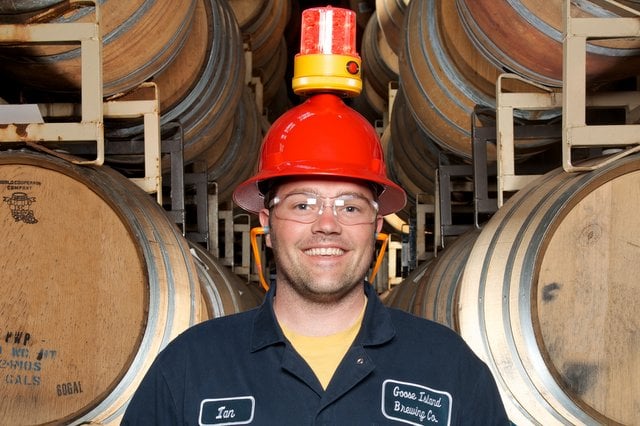
Brewing is an art. We’ll grant you that, but the business of brewing is more of a science, requiring specialized ingredients, exacting temperatures, well-maintained machinery, caustic chemicals and utmost safety. The brewhouse is a veritable warehouse full of specialized equipment and systems — from mills and mashing tuns to kettles and fermenting tanks. For a craft brewery to be successful, these many vessels need to be maintained and run properly and safely by a well-educated staff of employees. Because the scholarship of brewing is a constant journey, we decided to tap the big brains of top craft brewers and top brewhouse manufacturers and suppliers. We asked them to share their advice for safety and maintenance in the brewhouse, and the nuggets of wisdom below are the result. We raise a big pint of thanks to everyone who participated.
Keeping kettles clean
Josh Brengle, lead brewer
Cigar City Brewing (Tampa)
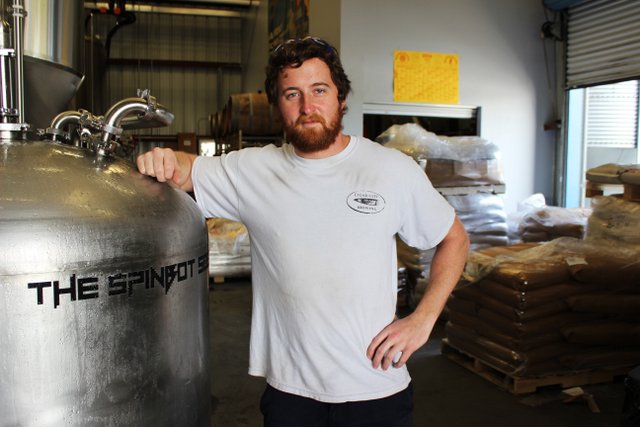
Cleaning using the right chemicals at the right frequency is integral to making sure equipment is operating productively and efficiently. Having a preventive cleaning schedule will help to save time, money and labor. With the continued popularity and growth of craft beer, many production breweries are brewing around the clock. Heat conductivity is easily lost due to a fouled kettle, which can directly affect a brewer’s evaporation rate and kettle gravity, not to mention boil-to-boil times. In this case, cleaning a kettle or other vessel before it presents an issue is key. Performing an initial cleaning cycle with a nitric acid-based cleaner will help remove scale and allow caustic to work much more effectively. Using an oxidizing agent during your caustic cycle can help to remove stubborn deposits from stainless steel. Be sure to rinse caustic with hot water and be sure to thoroughly rinse all associated piping. Bi-weekly inspections of calandrias, pumps and steam jackets can also help to identify problems. If performing a manual clean, like cleaning the hidden piping inside an internal calandria, be sure to use a softer metal so that you don’t scratch the stainless steel. Keeping your kettle clean using these methods can help to amplify your productivity in the brewhouse.
Choosing a heating source
Chris Riphenburg, head brewer
Ale Asylum (Madison, Wis.)

When choosing a heating source for your kettle or HLT [hot liquor tank], there are many factors to consider. The size of your system, space available, desired flavor impacts, heating time and, of course, money will be a few of the factors. There are three ways to heat your kettle or HLT. The old traditional way is to have a burner fed by natural gas [direct fire] to heat the liquid from the bottom. The more modern way used by most breweries today is steam jackets. The third and most efficient way is by using a shell and tube heat exchanger. Using a shell and tube can be up to 80 percent more efficient than old traditional direct fire burners. It can be up to 50 percent more efficient than steam jackets. Because they are more efficient, it will require less HP [boiler horsepower] from your boiler. Depending on your ceiling height and condensate return piping sizes, they don’t require condensate return tanks and pumps. This is a significant startup savings. Not to mention the pump will die at some point. We all know pumps like to die at the worst times. There are many different types of shell and tube heat exchangers. Which type you need will depend on your requirements. This heating method will make better beer in a shorter amount of time. I know that is what we are all ultimately striving to do. Work with your tank manufacturers and steam engineers to find the best fit for your new brewery or expansion.
Optimized spare part management
Oliver Jakob, graduated brewmaster and product manager
GEA Brewery Systems (Kitzingen, Germany)

An optimized spare part management system is easy to realize and provides you with the safety level required to ensure the efficiency of your plant. In order to find the right balance in stocking spare parts, you make an A-B-C analysis to classify them as follows. Class A are spare parts with high criticality, so you need a good inventory on your site. Class B are spare parts with average criticality, which your brew system vendor or service company should have on stock for a delivery on short notice. Finally, Class C are uncritical spare parts for which delivery times of some weeks are acceptable. For the latter, we recommend a weekly inspection, so possible damages on C parts are noticed in time and, if necessary, a spare parts order can be placed. This classification helps you to optimize both the operating costs and plant availability. Every brewery plant is unique as well as the actual operating conditions, so it is a smart idea to discuss that topic with your brew system manufacturer and together develop the best solution.
Safety begins with orientation
Keith Morris, operations manager
Beau’s All Natural Brewing Co. (Vankleek Hill, Ontario)
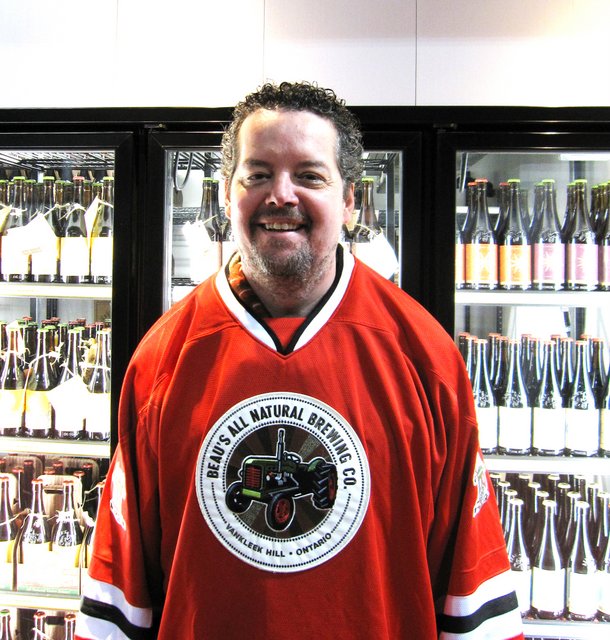
After your interview and selection process, you have picked the best candidate and now it’s critical to make sure the person gets off to a good start. Breweries are of course breweries, but also can be considered food producers, manufacturing facilities and sometime even construction zones. They are busy places, and you need to make sure the new team member understands that safety, quality and production are critical and prioritized in that order. An orientation checklist is one of the best ways to make sure everything is covered and should be completed along with a walk-through of the brewery before the person starts their job. The person conducting the orientation also needs to know the brewery well and understand everything that is on the orientation checklist. Topics might include when and where you must wear safety glasses, chemicals that are being used and WHMIS testing before starting [Workplace Hazardous Materials Information System]. Go over personal protective equipment, washroom location, break policy, etc. This will not only help improve your new team member’s job performance but also help keep the best people. Effective new hire orientation can not only increase productivity and save money, but a recent study has shown that when workplace injuries happen, 40 percent are employees who have been with the company less than one year.
MSDS reporting
Jamie Floyd, owner, founder and brewer
Ninkasi Brewing Co. (Eugene, Ore.)
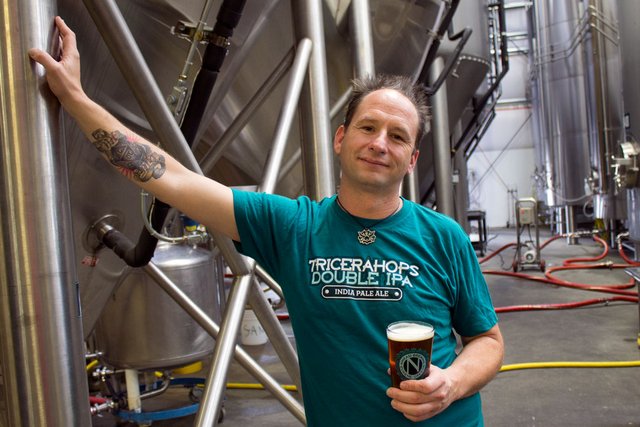
Under an OSHA [Occupational Health and Safety Agency] act set back in 1970, all businesses including breweries and brewpubs must have enough MSDS [Material Safety Data Sheets] copies to ensure that they are readily accessible during each work shift to employees when they are in their work area. Employees should not have to ask for an MSDS, as this could be perceived by employees as a barrier to access. Monthly OSHA Safety Meetings are also required by employee managers and staff to discuss safety around the brewery or brewpub, and they are an excellent forum for keeping up on MSDS sheets. These sheets have a wide variety of information about each chemical from the ingredients, concentrations, safe handling procedures, temperatures of effectiveness, and what to do if something is spilled or comes in human contact.
They also help determine the level of protective wear needed when using the chemical product and safe means of disposal. It is important to thoroughly study each chemical product you choose for the brewery because some products lend themselves better to some brewing equipment and practices than others. Chlorine, for instance, can cause damaging pits to stainless steel over the course of time and is in some chemical products. Copper has metal properties that can leach metal ions out with some chemicals that stainless steel is resistant to. I recommend looking closely at the MSDS to make sure the chemical you have is right for the kind of tank you are using. Knowing how to read MSDS documents is as important as having them on record, and it is good practice to train all employees on how to read these records in case of an emergency. The Brewers Association, American Society of Brewing Chemists and the Master Brewers Association of America all have excellent resources to help interpret MSDS documents as there are a lot of acronyms used for brevity that the user should know. Lastly, these need to be kept updated. Chemical suppliers do change products, so it is required that you have an up-to-date MSDS. MSDS records should be audited on a yearly basis to make sure the MSDS you have on file represents the chemical you are using in the brewery or brewpub.
Solenoid valves
Tom Perkins, Midwest regional sales manager
Bürkert Fluid Control Systems (Charlotte, N.C.)

In the world of brewing, solenoid valves are deployed to shut off, release, dose, distribute or mix liquids or gases. A solenoid valve is an electromechanically operated valve, controlled by an electric current through a solenoid (which is basically a long, helical wire with many loops, housing a strong magnetic field). In craft breweries, they are used a lot for proportional control — like on the glycol jackets on the tanks. They are also used for off/on control for different types of water or controlling air. Before you purchase a solenoid valve, you need to know a few specs such as port size, supply current and power consumption and if the valve is normally closed or normally open. It all depends on whether you want a long open time or long close time. On a normally closed valve, the valve will open when the power is on, and it will close when the power is off. On a normally open valve, the valve will close when power is on and after the power is off, the valve will open. Temperatures, operating pressure and cleanliness (does your solenoid valve require high purity?) are all very important considerations. In craft brewing, a solenoid valve can be used to control water — like when you run H2O through the sparge vessel or wort chiller. A solenoid valve might control the flow of a pre-beer fluid — like wort between the mash vessel and the boil vessel. Or a solenoid valve might be used to control a chemical — like the glycol in cooling jackets around the fermentation or bright tanks
Forklift and pedestrian safety
Ian Hughes, environmental and safety manager
Goose Island Beer Co. (Chicago)
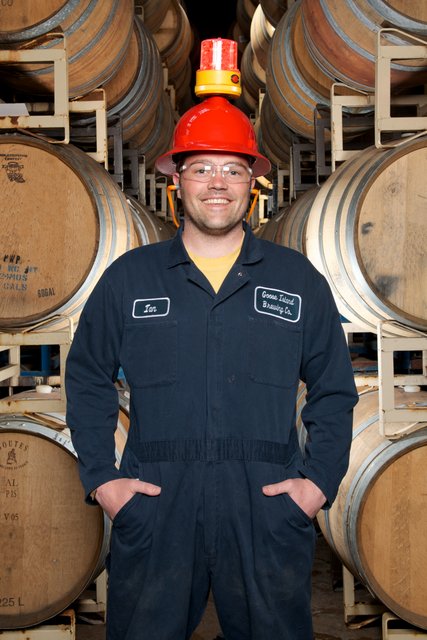
Brewery employees work around forklift traffic on a daily basis — sometimes this regular exposure can lead to a false sense of comfort and safety. Developing and implementing a thorough workplace transport safety plan can help expose and control risks, while providing a proactive means of preventing potentially deadly accidents. Here are a few recommendations for increasing forklift and pedestrian safety in your brewery based on several improvements we have implemented at Goose Island. Use clear signage and floor markings to segregate forklift and pedestrian traffic, creating pedestrian and forklift only zones. Emphasize awareness where forklifts and pedestrians must share the area, consider installing physical barriers and encourage clear communication between forklift operators and pedestrians. Ensure that audible reverse alarms and lights are properly functioning by requiring operators to conduct pre-use inspections on all forklifts. Improve visibility in warehouses with reflective tape and high-vis vests. Tie it all together with thorough training on the details of your workplace transport safety plan and you will help provide your employees with the tools they need to safely navigate your brewery.
Boiler maintenance
Andrew Carricato, director of brewery operations
The Grand Canyon Brewing Co. (Williams, Ariz.)

Many brewers at larger pubs and mirco-breweries are using steam generators. Steam is a very powerful and useful tool. Most people, however, are unsure of how a simple system like steam works. Not maintaining your steam system can be very costly when you’re talking about replacing boilers. Many brewers I know get talked into expensive monthly maintenance contracts and hundreds of dollars of boiler chemicals to maintain their boiler. The simplest way to maintain your boiler is to fix your steam and condensate leaks. A boiler should be a semi-closed system, using distilled water once the condensate has made one trip through the steam system. For every drop of water that leaks out on the floor or every wisp of steam that blows out of a leaking vacuum breaker has to be replaced with oxygen and chlorine laden city water. This is the greatest contributing factor to a rotten boiler. The most common loss of condensate [water that has turned to steam and then been recaptured] is the float or solenoid for the water makeup. A leaking float will push out that precious hot condensate and replace it with cold O2-filled city water. That $5 toilet-style float over time might be the reason you end up replacing a $20,000 boiler. Pump seals, vacuum relief valves and leaky steam solenoids are all common places to lose condensate. So don’t be lazy, fix those water and steam leaks, and in time, it might save you tens of thousands of dollars.
Keg maintenance and safety
Damon Scott, lead brewer
No-Li Brewhouse (Spokane, Wash.)

There have been many reports regarding catastrophic or potentially catastrophic keg failure. These incidents have mainly focused on plastic kegs, but safety is equally important when dealing with metal kegs. Firstly, proper regulation of gas and steam to your keg washer/filler is paramount. Ensure that all associated regulators are functioning and in good working order. In particular, steam can damage regulators and gauges quickly, especially if they are not designed for the pressure and temperature of steam. The condition of the keg exterior can also cause safety concerns. The beauty of quality stainless steel kegs is their usability over the course of years. The rim, or chime, can be damaged over time and render the keg unstable. A falling keg, from any height is a very dangerous keg. Promote someone in the brewery to keep an eye out for workplace safety and prioritize all concerns at regular meetings. Cheers.
Safety, sanitation and boil-overs
Dana Johnson, brewery specialist
Birko (Henderson, Colo.)

Breweries can be a dangerous place to work. Hot water, electricity, packaging machines, fork lifts, gases [like oxygen and carbon dioxide] and cleaning chemicals used or formed in the brewery can make it a risky place to work. The brewhouse can be especially dangerous with heated vessels used to mash and boil wort, hot liquor [hot water retained from the heat exchanger] and moving machinery [rakes in the mashtun, for example]. Here are some suggestions to help make the brewhouse a safer place to work:
- Lock Out Tag Out Program to help workers avoid getting hurt when machinery is being serviced
- Signage on vessels that are permit required for confined space entry
- General maintenance and sanitation, including keeping floors and drains well maintained and clean to avoid slips and falls
- Personal protective equipment [PPE] when using cleaning and sanitizing products in brewhouse CIP
- Avoiding boil-overs with the use of suitable antifoam
Interestingly, antifoams are becoming more popular in the brewhouse for today’s bigger brews that use more malt and have more protein. The increase in protein from the malt creates more foam when boiled, and brew kettle boil-overs are very common. Many brewers use a cold water hose with a hose-end sprayer to knock down the foam but then it takes longer to boil the beer to reach the desired original gravity [density of the wort prior to fermentation]. Birko has two very popular antifoams used by breweries: Birko Antifoam 100, for filtered beers, and Patco 376, which is a vegetable oil-based antifoam for unfiltered beers. These two products can also make the brewhouse a safer environment as well as keeping the equipment and work area more sanitary at the same time by reducing dangerous and unsightly boil-overs.


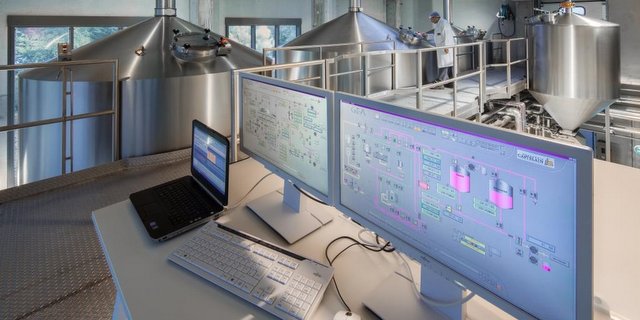
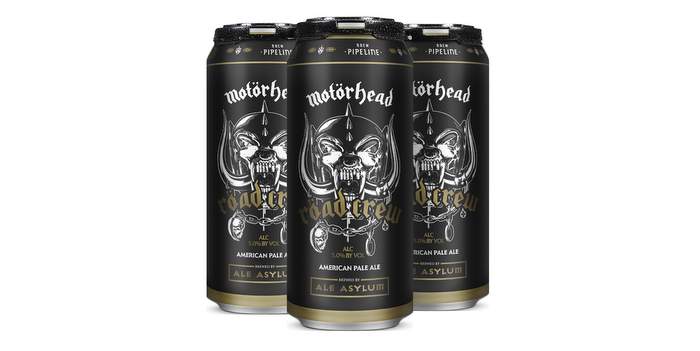
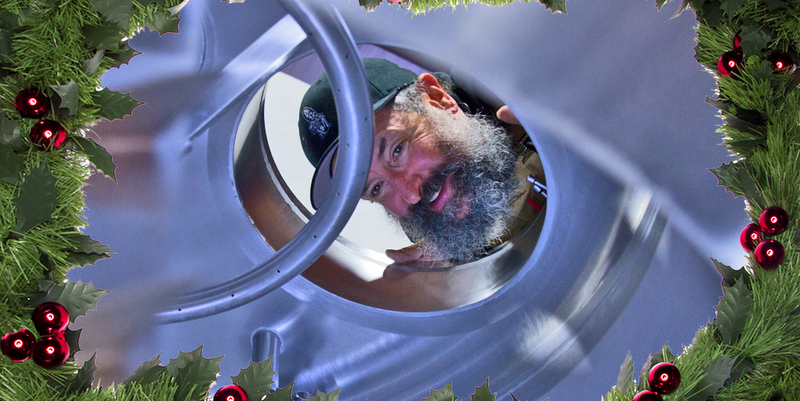
10 brewhouse maintenance and safety tips from craft professionals http://t.co/nBnnuQvop6 via @craftbrewingbiz
10 brewhouse maintenance and safety tips from craft professionals http://t.co/xW42t4eadq via @craftbrewingbiz
Important article from @CraftBrewingBiz! “10 brewhouse maintenance and safety tips from craft professionals… http://t.co/KWsf9Hrn7o
RT @MySafetySign: 10 brewhouse maintenance and safety tips from craft professionals http://t.co/3pF0aR8SxG via @CraftBrewingBiz #safety
.@CraftBrewingBiz Thanks for the opportunity to share a @GooseIsland safety story! The article turned out great! Cheers!
RT @CraftBrewingBiz: Thx 2 @CigarCityBeer @NoLiBrewhouse @AleAsylum @NinkasiBrewing @buerkertfluid @GooseIsland @GCBrewery for the insight …
Luiz Cunha liked this on Facebook.
Joel Halbleib liked this on Facebook.
Bev Armstrong liked this on Facebook.
Jason Kneupper liked this on Facebook.
Robert Evans liked this on Facebook.
For a craft brewery to be successful, vessels need to be maintained & run properly by a well-educated staff! http://t.co/Mk1xDWwrvC
RT @d_paul_josuns: Awesome seeing my dude @HughesBrews rockin’ that hard-hat #safetyrules http://t.co/8zjWURK1BF
10 brewhouse maintenance and safety tips from craft professionals http://t.co/3pF0aR8SxG via @CraftBrewingBiz #safety
Awesome seeing my dude @HughesBrews rockin’ that hard-hat #safetyrules http://t.co/8zjWURK1BF
10 brewhouse maintenance and safety tips from craft professionals http://t.co/GBc1hstxxW
All of those names plus GEA Brewery Systems and Birko were talking about brewhouse safety and maintenance today. http://t.co/aUcigX9TPj
Thx 2 @CigarCityBeer @NoLiBrewhouse @AleAsylum @NinkasiBrewing @buerkertfluid @GooseIsland @GCBrewery for the insight http://t.co/aUcigX9TPj
Birko’s brewery specialist, Dana Johnson, gave brewhouse maintenance and safety tips in the latest edition of… http://t.co/8qDeDc9rJb
RT @NoLiBrewhouse: Lead brewer Damon’s 2-cents on keg maintenance & safety http://t.co/qZ97bmONn9 @CraftBrewingBiz #craftbeer #beersafety #…
RT @NoLiBrewhouse: Lead brewer Damon’s 2-cents on keg maintenance & safety http://t.co/qZ97bmONn9 @CraftBrewingBiz #craftbeer #beersafety #…
Lead brewer Damon’s 2-cents on keg maintenance & safety http://t.co/qZ97bmONn9 @CraftBrewingBiz #craftbeer #beersafety #stainlessrocks!
RT @CoverYourBrew: A great article pertaining to #brewhouse maintenance and #safety. #craftbeer
http://t.co/errXHnkSjx
RT @CoverYourBrew: A great article pertaining to #brewhouse maintenance and #safety. #craftbeer
http://t.co/errXHnkSjx
RT @CraftBrewingBiz: 10 brewhouse maintenance and safety tips from craft professionals. http://t.co/l9NCzM5utW This is an awesome feature.
RT @CraftBrewingBiz: 10 brewhouse maintenance and safety tips from craft professionals. http://t.co/l9NCzM5utW This is an awesome feature.
RT @CraftBrewingBiz: 10 brewhouse maintenance and safety tips from craft professionals. http://t.co/l9NCzM5utW This is an awesome feature.